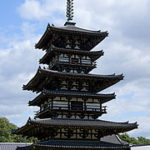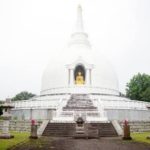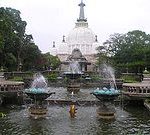Sanskrit
Sanskrit (梵: संस्कृत, saṃskṛta, English: Sanskrit) is a language belonging to ancient Indian Aryan. Ancient language used in South Asia and Southeast Asia such as India. Widely used in fields such as literature, philosophy, academics, and religion. It is also a Hindu worship language, and many scriptures were written in this language in Mahayana Buddhism
The Kanji word “Bongo” is a nickname for Sanskrit in Chinese character culture areas such as China and Japan. In pre-modern Japan, the word 梵語 has been used through the translation of Sanskrit original text in Chinese characters, such as Hanwa Shinkei. Jingo is a word based on Indian tradition with the origin of Sanskrit as the artifact God Brahman.
Sanskrit is an ancient language belonging to the Indo-Iranian group of Indo-European languages.
Its origin is the Vedic language used in the Vedic literature, including Rig Veda (the oldest part is around 1500 BC). The oldest layer of Vedic language is very close to the Avester Garser language (Old Avester), a classical language belonging to the Indo-Iranian Iranian group.
Sanskrit was originally a language that had no letters, and until that time, it continued to be a culture mainly of reading rather than clerk. On the other hand, Sanskrit brought various notations that differ according to the times and regions. Sanskrit is written in character after Brahmi, the ancestor of Indian characters, was used in Sanskrit notation around the 4th century. A character developed for the notation of lit, and a new notation was developed for accurate notation. Furthermore, the Sanskrit written in Brahmi characters was propagated to Southeast Asian countries along with Indian culture, creating a variety of Brahmy characters in this area [42]. Traditionally, Japanese characters have been used in Japan (a kind of Siddharma tricker character, the so-called “梵 character”), and in South India, the writing of Granta characters has been reported even though the number of users has decreased.
Nowadays, writing Sanskrit using Devanagari throughout India, regardless of region, has been done recently. IAST is common as a transliteration method using Latin characters.
In Buddhism, it was first practiced using Placrit, an everyday language, and the scriptures were also written as Purali scriptures in Placrit. However, in the 4th century, when the Gupta era promoted academics and made Sanskrit an official language, Sanskrit was also used in Buddhism due to disputes with other religions and the development of doctrines.] It has been translated into. This movement became particularly popular in Mahayana Buddhism, and since then Mahayana Buddhism has become the mainstream of Sanskrit scriptures. During this process, there was a temporary chaos of language, and a mixture of Sanskrit and Prakrit called Buddhist chaos Sanskrit appeared and was used for a period of time in Buddhist scriptures.
While theravada Buddhism extended the teaching line toward Southeast Asia while retaining the scripture of Purakrit (Pali), Mahayana Buddhism reached East Asia around the North Silk Road, along with the propagation of Buddhism Sanskrit was communicated to these countries. However, it is believed that the original Chinese Buddhist scriptures were not always Sanskrit, and may originate from Plakrit like Gandhara. However, as Buddhism spread in China, so-called priests of solicitation began to appear in India, the birthplace of Buddhism in search of pilgrimages and scriptures. During this period, the Mahayana Buddhist scriptures in India were mostly Sanskrit, so most of the Buddhist scriptures brought back by them were from Sanskrit. The 5th-century Hoken and the 7th-century Gyojo are known as priests, but the most prominent of these monks is the 7th-century Tang Dynasty, the vast Sanskrit Buddhist Han brought back The translation made a breakthrough in translation history. His later translations of Buddhist translations are referred to as new translations for historical reasons [57], and they are classified as old translations by Hatomara and others before that, often not from Sanskrit.
Through China, we have introduced knowledge and words about Sanskrit along with Buddhism and Buddhist scriptures. At that time, you can go back to Kaigon Kukai of Shingon sect at the latest. Many Buddhist terms are transliteration in Sanskrit Kanji, such as “monk”, “Sanran Bon”, “Shoutou”, “Nammu, Amida, Buddha [60]”. Some of them are translated into everyday language such as “Dana”. In addition, mandala, mantra are not translated into Chinese, but are written in Kanji characters that sounded Sanskrit and read directly. Mandala appears in several literary works in modern Japan (such as Kyoka Izumi, “St. Takano”). For the characters drawn on the turret tower and talisman, refer to the characters. The Japanese syllabary arrangement is thought to be influenced by the arrangement of Sanskrit’s traditional phonological table, and is derived from Sanskrit phonology.
Character
“Bonji” is a generic Chinese translation of the Brahmic script used in India. Brahmi means “characters created by Brahma”. It is also understood simply as “characters for expressing Sanskrit”. In Japan, it is historically and traditionally often referred to as “Shitanmoji” (English: Siddhaṃ script).
“Bonji” is a generic Chinese translation of the Brahmic script used in India. Brahmi means “characters created by Brahma”. It is also understood simply as “characters for expressing Sanskrit”. In Japan, it is historically and traditionally often referred to as “Shitanmoji” (English: Siddhaṃ script).
Each 梵 character (悉 cloud character) represents various Buddha’s various buddhists, and one 表 す character often represents multiple Buddhas. This is called seed or seed. Even a single Buddha may use different characters in the Kongo world and the brewery world (eg, Dainichi Nyorai: The zoo world: a / Kongo world: vaṃ)
Seal
Inso (Insou, Inzo,: mudrā), in Buddhism, forms various shapes with the fingers of the hand and marks the insider evidence of Buddha, 菩薩, and various prestiges [1]. It is also called the seal, the seal [1], the seal, and the seal [1]. In order for the practitioner to intervene and merge with the main shrine, the sign of the main shrine may be signed. Originally, there were no established rules for India, but with the development of Esoteric Buddhism, the phase was established and the meaning came to be explained [
Sanskrit Muddler (मुद्रा, mudrā) is a Chinese translation, originally meaning “sealing”, “stamp”, etc. It mainly refers to symbolic gestures that Buddha statues show with both hands.
Main Insignia [edit] Abhaya Mudrā Abhaya Mudrā Insignia with his hands raised and the palm facing forward. It is a sign that encourages the other party to “don’t be afraid” as the kanji shows. Non-empty fulfillment will come. Varada Mudrā A seal with his hands lowered and his palms facing forward. In the case of a sitting figure, the palm may be turned up. In this case, tilt the fingertip side so that the other party can see the palm. This model imitates the gesture of giving something to the other party.施無 awe Azukaganshirushi (Semui Yogan you doing) the right to 施無 awe mark, was the left hand to Azukagan mark mark. In the case of a sitting figure, put the palm of your left hand up and put it on your knee. This is a sign to fulfill the wishes of believers. The application seal is one of the most common signs that the Nyorai statue shows, and many of them show this seal on the Buddha. If you have a medicinal pot on the left hand that shows the sign of your request, you are a pharmacist. However, some of the statues of Yakushi Nyorai have lost their original shells, and there are images that originally have no shells, such as riding in a medicine box. In addition, some Amida Nyorai statues show the application stamps, and it is often impossible to determine the number of Buddhas only by this seal. Figure 1 shows the Buddha of Tiantan on Lantau Island, Hong Kong. Fig. 1 Application of sealless application (Hong Kong, Tian Tan Buddha) Dharmachakra Mudrā One of the seals of Buddha, raising both hands to the height of the chest, the thumb and the other finger Match the tip and make a circle. Simulated gesture that explains something to the other party by hand gesture, also called “preaching sign”. The “rolling wheel” is a metaphor for “preaching the truth”. Or match which finger and thumb, there are many variations, such as by one point on or turn to their own or turn in front of the palm. For example, in the case of the Buddha of Buddha, the right hand is pointing forward and the left hand is pointing towards you. In this case, the right hand means preaching to the audience and the left hand means preaching to yourself. Dhyāna Mudrā This is a sitting figure, with the palms of both hands up and superimposed vertically in front of the stomach (on the knees). This is a sign indicating that the Buddha is in meditation. The seals of Buddha Nyorai and Ninohi Nyorai (Plezozo) are layered with the right hand over the left hand, and the other finger is extended with the tips of both thumbs aligned. This is known as the legal boundary [Note 2]. Amida Nyorai’s seal is regarded as a legal boundary in Esoteric Buddhism, but in the case of Jodo, there is a similar way in which both hands are overlapped to make a ring with the thumb and index finger (or middle finger, ring finger). There are many variations of Amida Nyorai’s seal, which will be described in detail later. Bhūmisparśa Mudrā It is also called the Devil Mark. While sitting down, touch the ground with your fingertips with your palms down. According to the legend, Shakyamuni was interrupted by a devil during his training. At that time Buddha is to appear the God of earth to touch the ground with your fingertips, that thereby rejected the devil. For this reason, touch marks symbolize a strong heart seeking truth without losing temptation or disability. In addition to Buddha Nyorai, Ao Nyorai and Tendoku Thunder Sound Nyorai are connected. Vajra Mudrā The left hand extends the index finger, and the middle, ring, and little fingers hold the thumb. The right hand holds the left index finger and aligns the tip of the right thumb with the tip of the left index finger. Dainichi Nyorai (Kongo world), the one-letter gold ring Buddha and Taho Nyorai are connected. A sign of Furisei-san, a sign that entangles little fingers and crosses them in front of the chest.
No sign
Application stamp
Rotation seal
Zen seal
Exorcism seal
Amida Nyorai’s seal [edit] Fig. 2 The seal (Daibutsu Kamakura)
There are several types of seals of Amida Nyorai, but in any case, the principle is to make a ring with your thumb and index finger (or middle finger, ring finger).
As stated above. In the case of Amida Nyorai, there are some that raise both hands to the height of the chest and make a ring with the thumb and index finger (or middle finger, ring finger). Examples in Japan include Uji’s Byodoin Tsujimoto Honzo statue and Figure 2 Kamakura and Kotokuin Honzo statue (Kamakura Daibutsu). It’s a seal sign. Raise both hands to chest level and make a ring with thumb and index finger (or middle finger, ring finger). The Sample images in Japan, Kyoto Kōryū-ji auditorium Buddha image, but there is such Hokke-ji image, is relatively rare mark phase. This is the sign of Toma Mandara’s Nakason. Similar to the “Laigoin” sign, the right hand is raised, the left hand is lowered, and the palms of both hands are turned forward, and a ring is formed with the thumb and index finger (or middle finger, ring finger) of each hand. When Amida Nyorai comes to pick you up from the western paradise
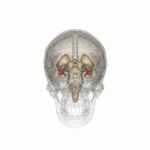




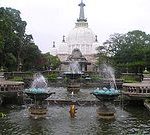 .
.